The Charles Archive: Chorley House, Droitwich
- 9th August 2018
This is the eighth in a series of blog posts celebrating the life and work of timber-frame building specialists FWB ‘Freddie’ and Mary Charles. Funded by Historic England, the ‘Charles Archive’ project aims to digitise and make more accessible the Charles Archive collection. In this blog we look at material related to the now demolished Chorley House in Droitwich.
Chorley House stood in Friar Street, Droitwich. Reputed to have been part of an Augustinian Friary, founded in Droitwich in 1331, the building dated to the 14th-15th century and was described by Freddie Charles as the finest example of medieval timber-frame construction in the county, excluding Worcester itself, in spite of extensive Elizabethan rebuilding. Its original form, which was practically complete, when Freddie and Mary surveyed the building in 1960, consisted of a hall with two-storey additional bays at each end and side wings, each of three bays, forming a U-plan with the court open to the street on the south (Charles, 1967, 58)
‘The two middle bays were the hall proper, open to the roof, with the passage occupying half of the lower bay in which the later fireplace had been built. The two bays were of the same length with a broad-timbered central truss and delicate intermediate trusses. The whole structure was a classic example of medieval design, the characteristic upper end wall, swept braces in the wall-frames, elegantly cusped end-braces, and an ogee door-head in the upper end bay leading into the side wing. In the side wing not one truss was the same as any of the others. The cusped struts in one of them had been halved from the same log and the cusps followed the natural grain’. (Charles, 1984, 220)
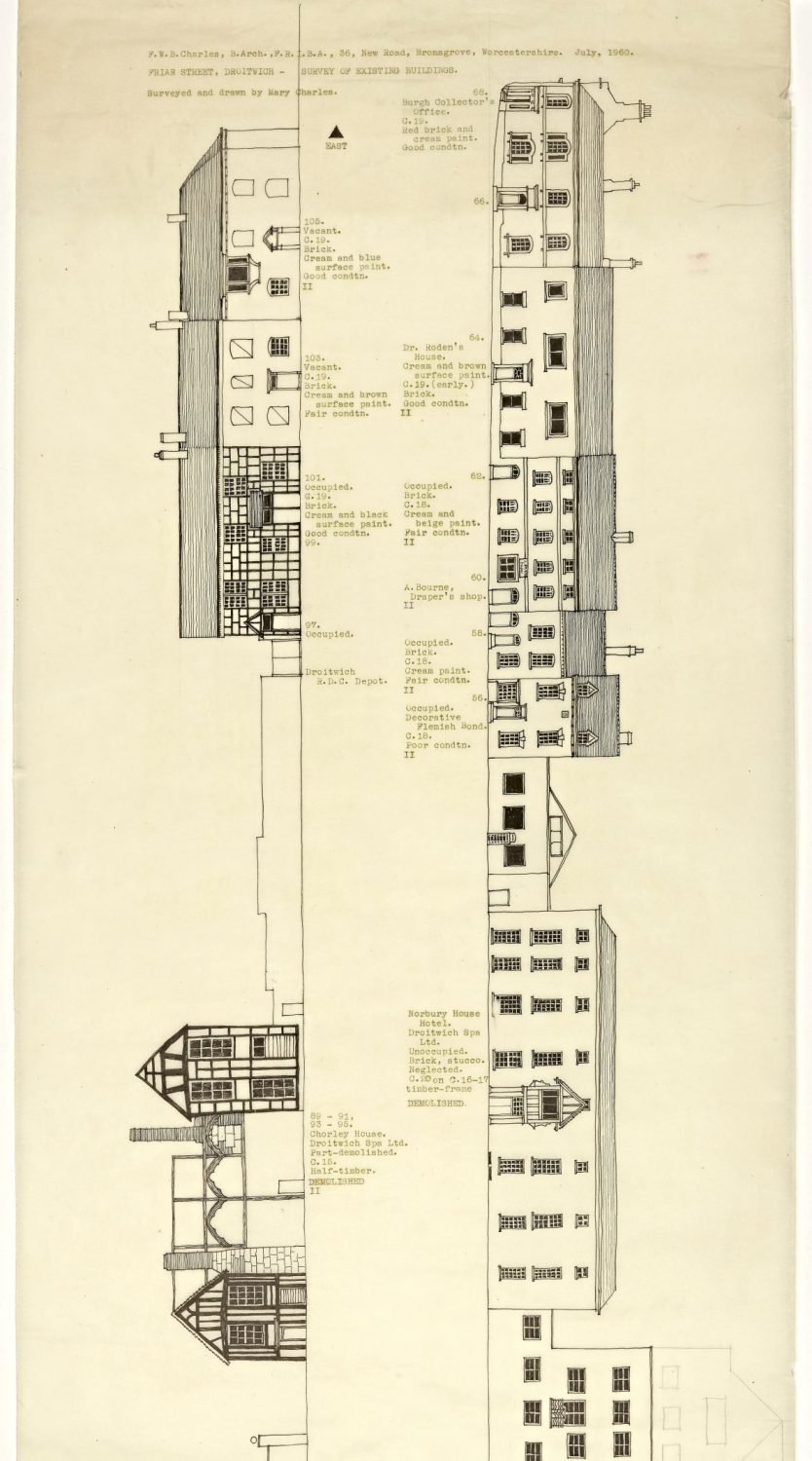
This image shows part of a ‘Survey of Existing Buildings’ in Friar Street, surveyed and drawn by Mary Charles in July 1960. Chorley House, which is recorded as Grade II listed and already partly demolished, is shown opposite the Norbury House Hotel, which has also been demolished. Digitised image © Worcestershire Archive and Archaeology Service, ref: CA_BA14644-19_01c
The building was remodelled following the dissolution of the monasteries (1536 – 1541), when it became a grand town house, and again in the late 17th/early 18th century. In the Victorian era it was subdivided into three separate houses (Charles, 1984, 220). By 1960 the building, which was by this point in a serious state of neglect, was under threat of demolition, despite being designated as a Grade II – albeit it 17th century – listed building. A scheme for its conversion and extension as a County Branch Library was commissioned, but despite local public support, the building was sadly demolished in 1962.
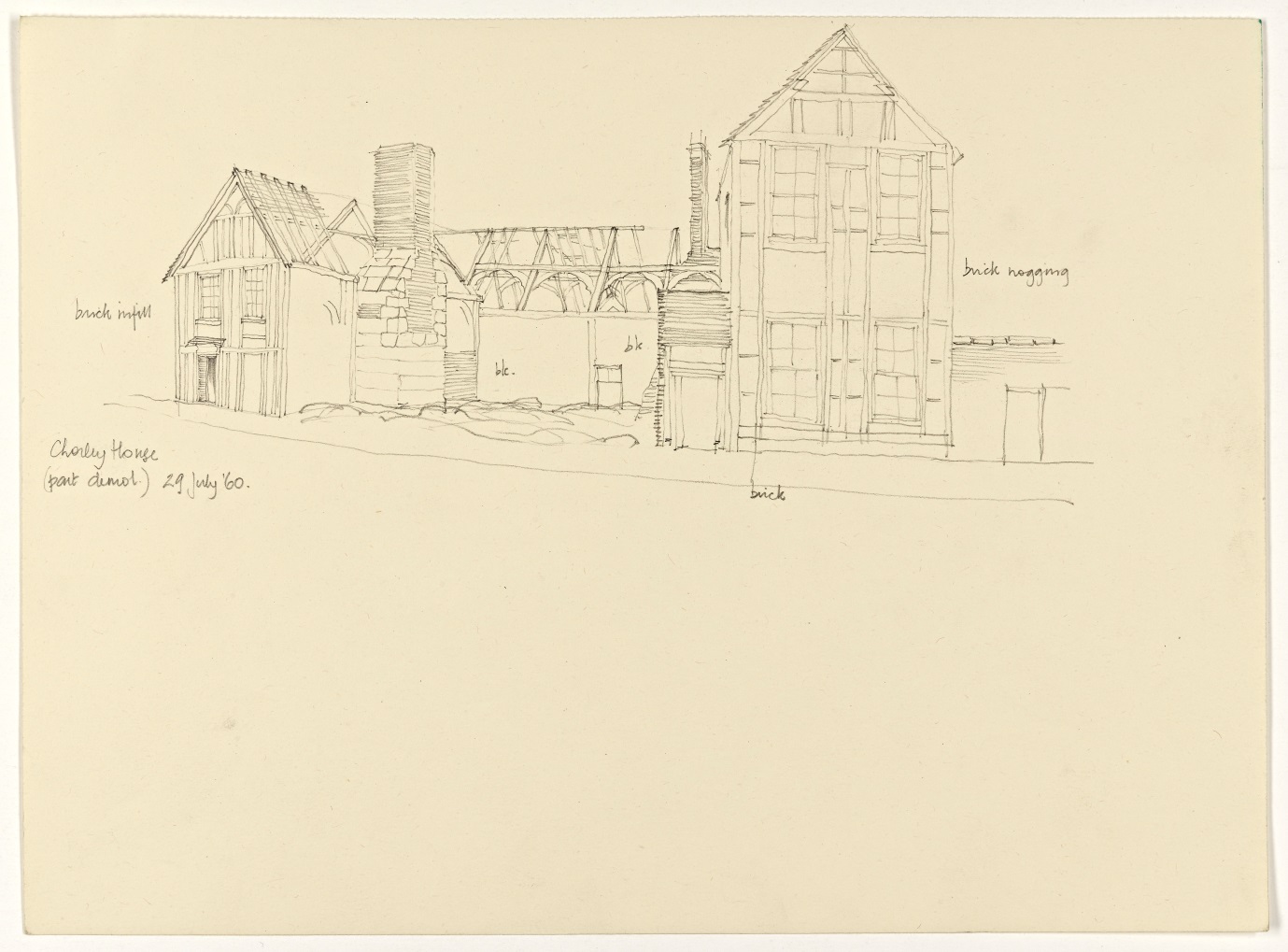
Sketch drawing of Chorley House, dated 29th July, 1960. Digitised image © Worcestershire Archive and Archaeology Service, ref: CA_BA12857-7-6_01
Sketch scheme for the building’s conversion and extension as a County Branch Library, dated 29th June, 1962. The proposed scheme preserves the structure, as it survived in 1960, including the open roofs over the hall and the west wing. It also retains part of the inserted Elizabethan floor to provide a gallery for part of the Children’s Library over the upper bay of the hall. Freddie states that the structural frames for the hall and west wing are sound and suggests that ‘if Friar Street is too become a pedestrian precinct, the west wing should be restored to its original length, some six feet greater than at present’. He goes on to report that the east wing requires more drastic reconstruction to ‘retain its eighteenth century innovations as well as its original trusses and timber frame in the east wall‘ and argues that ‘the extension should be built in the architecture of to-day, ‘faked’ restoration should be avoided throughout’
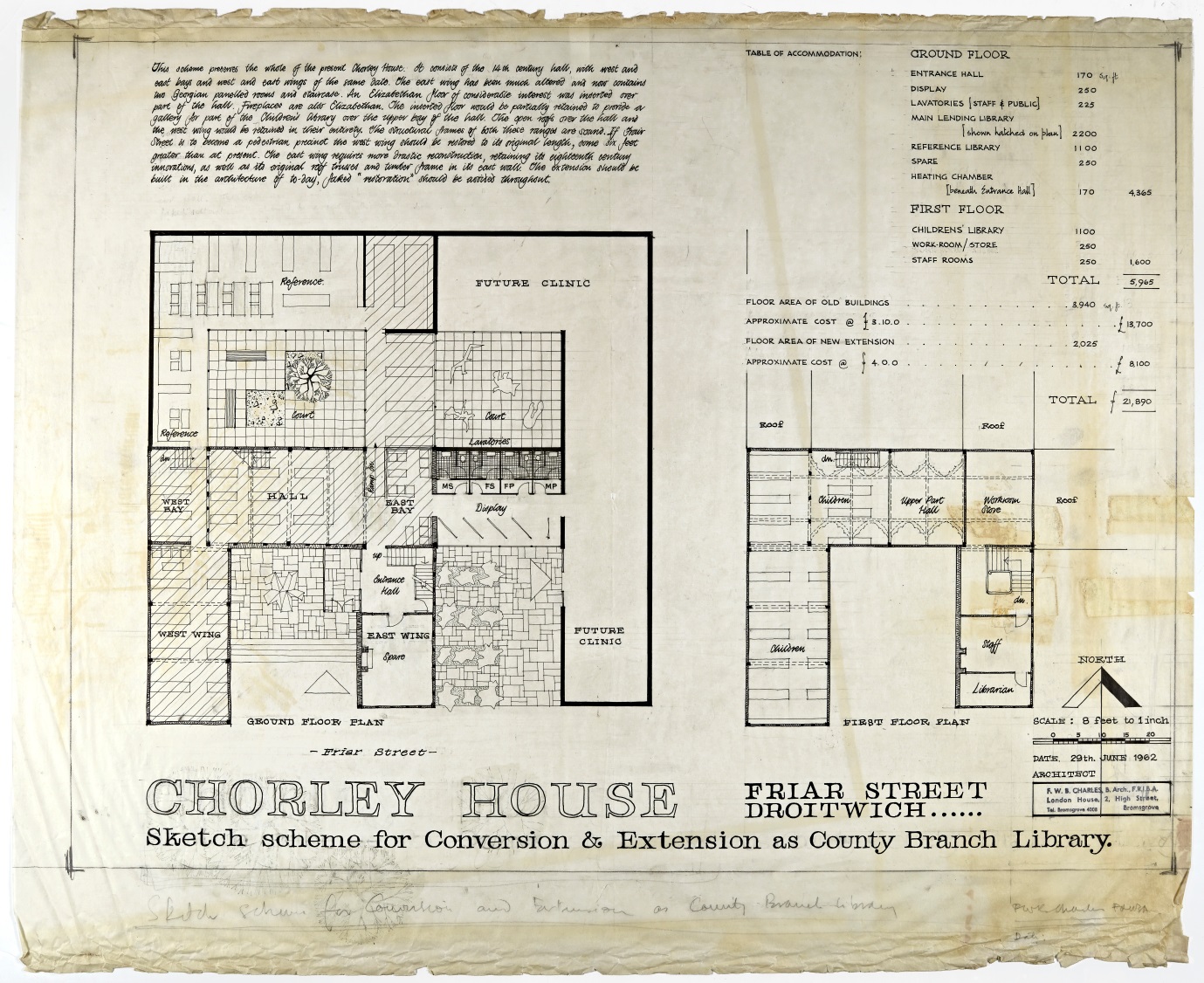
Digitised image © Worcestershire Archive and Archaeology Service, ref: CA_BA12857-32_01
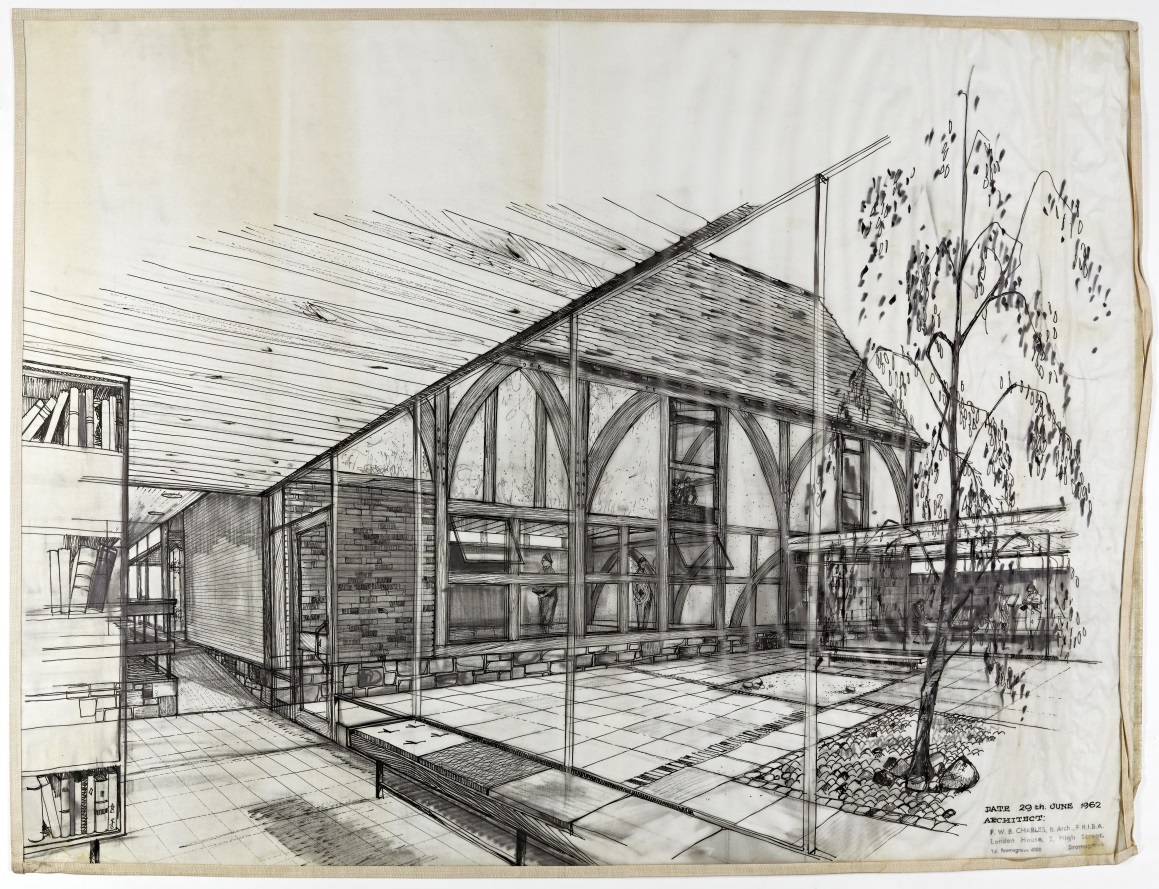
Drawing showing the Charles’ vision of Chorley House as a County Branch Library, dated 29th June, 1962. Digitised image © Worcestershire Archive and Archaeology Service, ref: CA_BA12857-32_06.
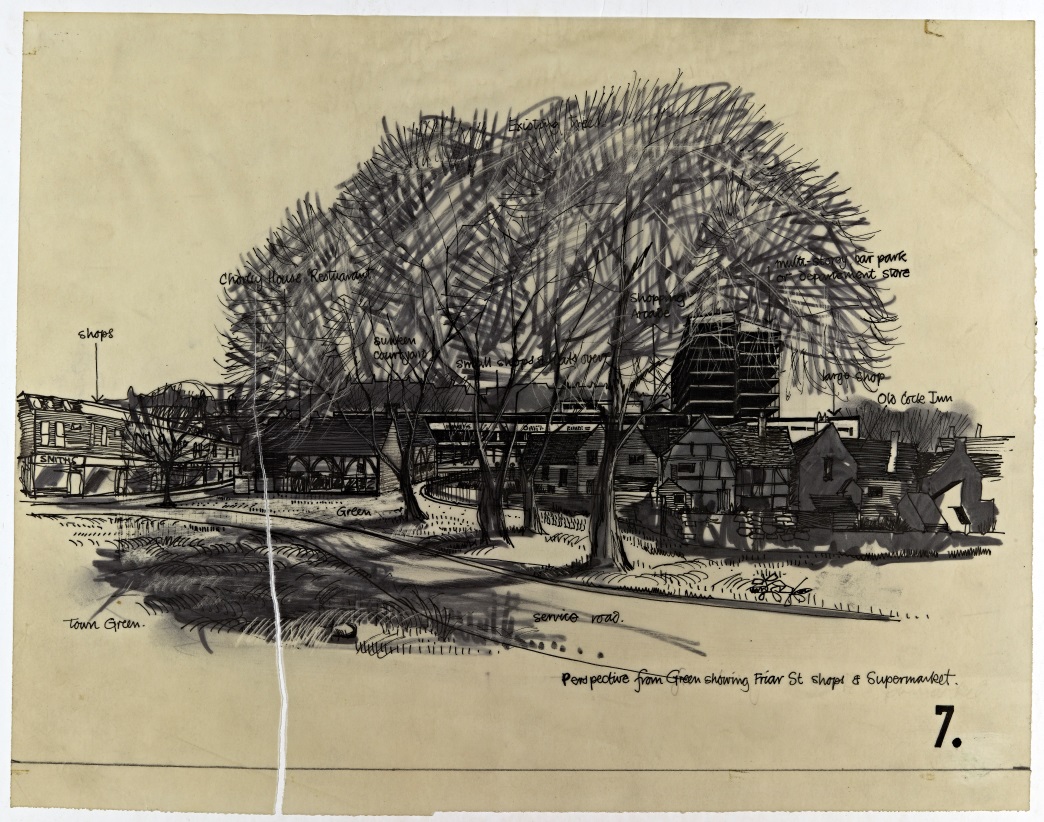
Perspective drawing (from Green showing Friar Street) showing Chorley House (as a restaurant rather than a library) as part of a redeveloped town centre. Digitised image © Worcestershire Archive and Archaeology Service, ref: CA_BA12857-32_04
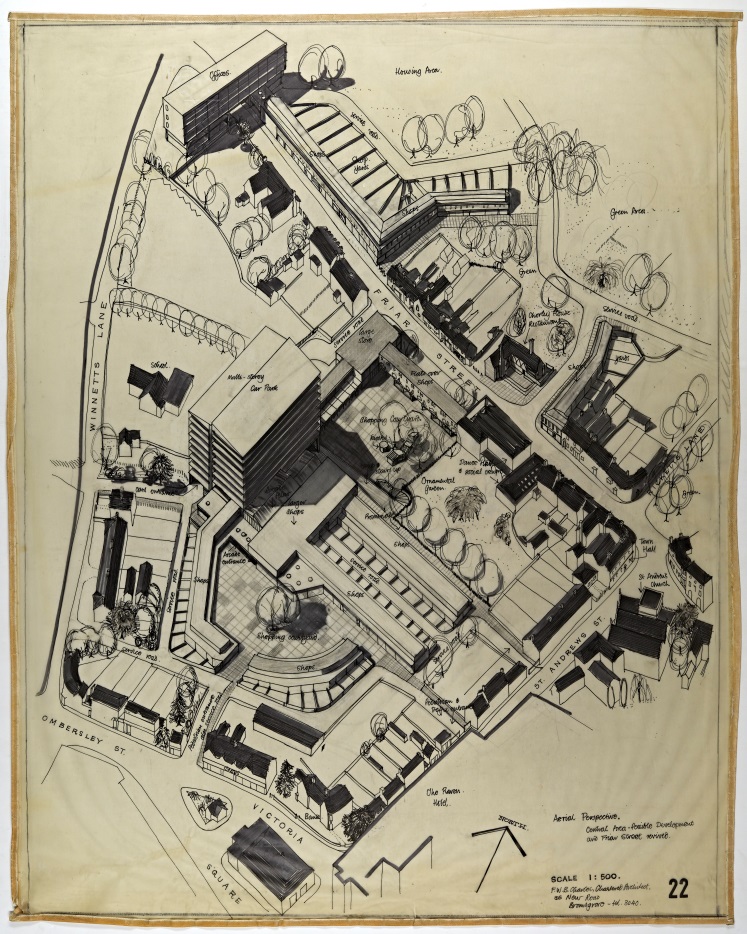
Aerial perspective showing Chorley House (as a restaurant rather than a library) as part of a redeveloped town centre. Digitised image © Worcestershire Archive and Archaeology Service, ref: CA_BA12857-32_05
The images in this post were taken by our Digitisation team. For more information about their work, or to enquire about having your own material digitised, check our Collections Services page.
References
Charles, F.W.B. (1967) Medieval Cruck-Building and its Derivatives: A Study of Timber-Framed Construction based on Buildings in Worcestershire. The Society for Medieval Archaeology Monograph Series: No. 2. London
Charles, F.W.B. 1984. Conservation of Timber Buildings. Hutchinson. London
Must have been a beautiful place in its time. As were most of the timber framed buildings. I lived in a small timber framed cottage in Leintwardine some years ago and loved it.
The Droitwich element of this interesting project overlaps with the ‘Historic Droitwich: its streets and people’ project, results of which are to be found at http://historicdroitwich.org.uk/ . For a link to an article on the archaeology of the street relating to these historic buildings , see eg bottom of the http://historicdroitwich.org.uk/history/ page